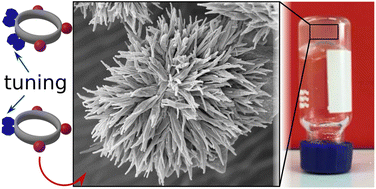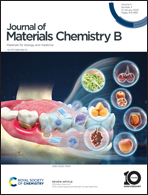Self-healing cyclic peptide hydrogels†
Abstract
Hydrogels are soft materials of great interest in different areas such as chemistry, biology, and therapy. Gels made by the self-assembly of small molecules are known as supramolecular gels. The modulation of their properties by monomer molecular design is still difficult to predict due to the potential impact of subtle structural modifications in the self-assembly process. Herein, we introduce the design principles of a new family of self-assembling cyclic octapeptides of alternating chirality that can be used as scaffolds for the development of self-healing hydrogelator libraries with tunable properties. The strategy was used in the preparation of an amphiphilic cyclic peptide monomer bearing an alkoxyamine connector, which allowed the insertion of different aromatic aldehyde pendants to modulate the hydrophobic/hydrophilic balance and fine-tune the properties of the resulting gel. The resulting amphiphiles were able to form self-healable hydrogels with viscoelastic properties (loss tangent, storage modulus), which were strongly dependent on the nature and number of aromatic moieties anchored to the hydrophilic peptide. Structural studies by SEM, STEM and AFM indicated that the structure of the hydrogels was based on a dense network of peptide nanotubes. Excellent agreement was established between the peptide primary structure, nanotube length distributions and viscoelastic behaviour.



 Please wait while we load your content...
Please wait while we load your content...